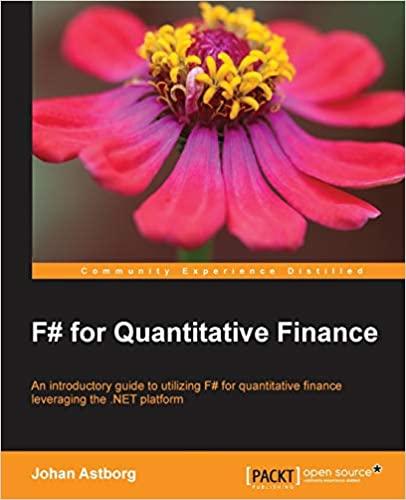Question
You estimate that by the time you retire in 35 years, you will have accumulated savings of $2.7 million. a. If the interest rate is
You estimate that by the time you retire in 35 years, you will have accumulated savings of $2.7 million. a. If the interest rate is 8.0% and you live 15 years after retirement, what annual level of expenditure will those savings support? (Do not round intermediate calculations. Enter your answer in whole dollars rounded to 2 decimal places.)
b. Unfortunately, inflation will eat into the value of your retirement income. Assume a 3% inflation rate and work out a spending program for your $2.7 million in retirement savings that will allow you to increase your expenditure in line with inflation. What will be your expenditure amount in real terms for each year of your retirement? (Do not round intermediate calculations. Enter your answer in whole dollars rounded to 2 decimal places.)
2.a. How much will you have at the end of 21 years if you invest $230 today at 13% annually compounded? (Do not round intermediate calculations. Round your answer to 2 decimal places.)
b. How much will you have if you invest at 13% continuously compounded? (Do not round intermediate calculations. Round your answer to 2 decimal places.)
3. Kangaroo Autos is offering free credit on a new $12,400 car. You pay $700 down and then $390 a month for the next 30 months. Turtle Motors next door does not offer free credit but will give you $1,180 off the list price.
a. If the rate of interest is 0.75% a month, calculate the present value of the payments to Kangaroo Autos. (Do not round intermediate calculations. Round your answer to 2 decimal places.)
b. Which company is offering the better deal? multiple choice Turtle Motors Kangaroo Autos
4.If the one-year discount factor is 0.9158, what is the one-year interest rate? (Do not round intermediate calculations. Enter your answer as a percent rounded to 2 decimal places.)
If the two-year interest rate is 9.2%, what is the two-year discount factor? (Do not round intermediate calculations. Round your answer to 4 decimal places.)
Given these one- and two-year discount factors, calculate the two-year annuity factor. (Do not round intermediate calculations. Round your answer to 4 decimal places.)
If the PV of $10 a year for three years is $25.22, what is the three-year annuity factor? (Do not round intermediate calculations. Round your answer to 4 decimal places.)
From your answers to (c) and (d), calculate the three-year discount factor. (Do not round intermediate calculations. Round your answer to 4 decimal places.)
Step by Step Solution
There are 3 Steps involved in it
Step: 1

Get Instant Access to Expert-Tailored Solutions
See step-by-step solutions with expert insights and AI powered tools for academic success
Step: 2

Step: 3

Ace Your Homework with AI
Get the answers you need in no time with our AI-driven, step-by-step assistance
Get Started


